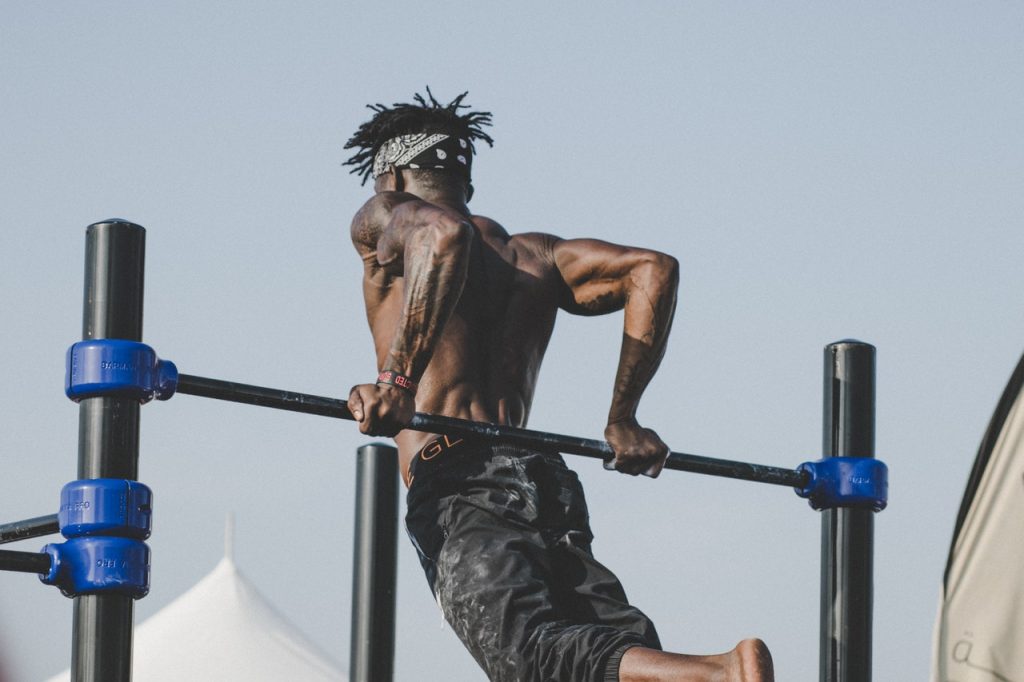Workouts
The Best Bodyweight Workout for Building Mass
Discuss this post in RPG FitGroup!
One of the most common questions I receive both here on the blog, and also on the YouTube channel is “Hey Dan, I want to build mass, but I don’t have access to weights/a gym, what’s the best bodyweight workout for building mass?”
So, for every one of those people, and for you, you lovely reader, you, here it is. The best workout I can design for building mass without ANY weights. This INCLUDES things like weighted vests, backpacks, sandbags, etc. The only equipment you need for this is a pull up bar, some benches/chairs, and a wall.
Couple of things to note before we begin, though:
1: This workout is still not as good for building mass as weightlifting. Sorry, this is just the way life is. If you want to get big, you need to lift big.
2: This workout (and any other workout for building mass, weights or no,) is useless if you’re not eating to gain mass. You need to be eating one gram of protein for every pound of bodyweight you have (at least, this is your target.) You also need to be consuming enough calories to be putting on one to three pounds of bodyweight per month. Check out Macros and You! and The Secret to Building Mass for more on diet.
3: This workout consists primarily of advanced motions. This isn’t exactly a beginner progression workout. If you’ve got a difficult time with these exercises, start with something like The Krillin Workout or the Mikasa Ackerman Workout.
4: TIME UNDER TENSION IS KEY!! You’re not performing this workout optimally until you’re doing all the movements with a 4-2-1 tempo, meaning you perform the eccentric portion of the exercise for a count of 4, hold the isometric portion for a count of 2, and then perform the concentric motion for a count of one. Read more about this in What tempo should I lift at?
So, enough disclaimers, let’s jump in!
The Best Bodyweight Workout for Building Mass
Equipment Required:
Pull Up Bar
Chairs/Bench
Style: Station – Perform all sets of an exercise before moving on to the next exercise. Rest 60-90 seconds between sets.
Workout A (Push):
4×8-12 Decline Push Ups OR 4×8-12 Planche Push Ups
4×8-12 Handstand Push Ups (do these with your hands on chairs, blocks, or parallette bars so you can drop your head lower than your hands for full range of motion)
4×8-12 One Armed Push Ups
4×8-12 Chair Dips
3xAMRAP Incline Push Ups
Workout A Notes:
Push ups, push ups, push ups, push ups. Basically everything is some variant of push up here, except for the dips, designed to hit every head of your pectoral muscles, your anterior and medial deltoids, and your triceps. Planche push ups are better than decline push ups but they are hella difficult to do so do the declines until you can do the planches, and add some planche holds/progressions to the end of your workout.
Workout B (Legs):
4×8-12 Pistol Squats (each leg)
4×8-12 One-Legged Hip Thrusts (I know I said this is a bodyweight workout but any kind of weight you can put on your hips for these helps.)
4×8-12 Jumping Lunges
4×8-12 One-Legged Calf Raises (do these with the front of your foot on a chair or book or something to get full range of motion.)
4×8-12 Box Jumps
Tabata Interval Sprints (20 second sprint as fast as you can, 10 second rest, repeat 8 times)
Workout B Notes:
Progressive overload (which is necessary for muscle growth) is particularly difficult to achieve with your legs in a bodyweight workout since they’re so damn strong, so we’re including some plyometric work to really push them to the limit with the sprints, box jumps, and jumping lunges. You can do bouncing calf raises as well if you’d like, but I prefer the slower raises to really emphasize muscular contraction.
Workout C (Pull):
4×8-12 Front Lever Rows
4×8-12 One Armed Pull Ups
4×8-12 Close Grip Chin Ups
4×8-12 Wide Grip Pull Ups
4×8-12 Dragon Flags (hold onto anything solid for these)
Workout C Notes:
The mirror image of workout A, workout C is basically all pull ups, all the time. If you don’t have the front lever rows yet, see if you can find something sturdy to hang onto like a railing or a table to do regular inverted rows with. Work your front level progressions at the end of every workout if this is the case (like with the planche on workout A.) If you don’t have the one armed pull ups yet, work uneven hammer grip pull ups, archer pull ups, or chair-assisted one armed pull ups instead. Dragon flags are badass, but you can do toes-to-bar if you’d prefer (do them at a 90 degree lockout if you’re hardcore.)
Schedule:
Day 1: Workout A
Day 2: Workout B
Day 3: Workout C
Day 4: Rest
Schedule Notes: Simple rotational schedule. We put workout B in between A and C to give your upper body time to recover, and then rest on day 4 for a full body recovery. Repeat ad infinum until body reaches desired size.
That’s it! Like I said, it’s got a bunch of advanced maneuvers, but you can find a bunch of progressions for them out there (like my Handstand Push Up Progression guide.) This is, honestly, the best bodyweight mass gain workout guide I can craft with my current level of knowledge. I hope it helps you get big!
Live boldly, change the world, and continue to be awesome!




